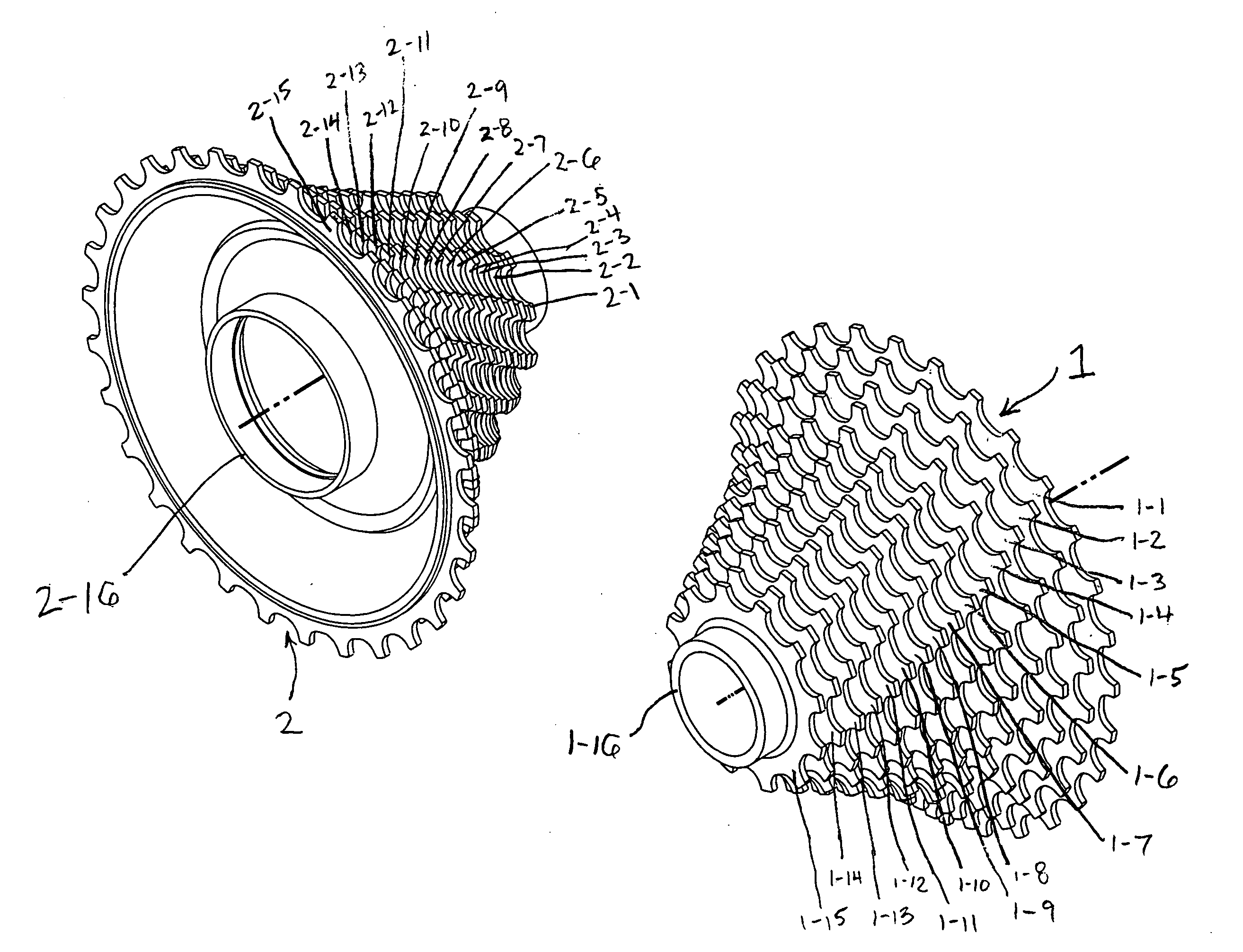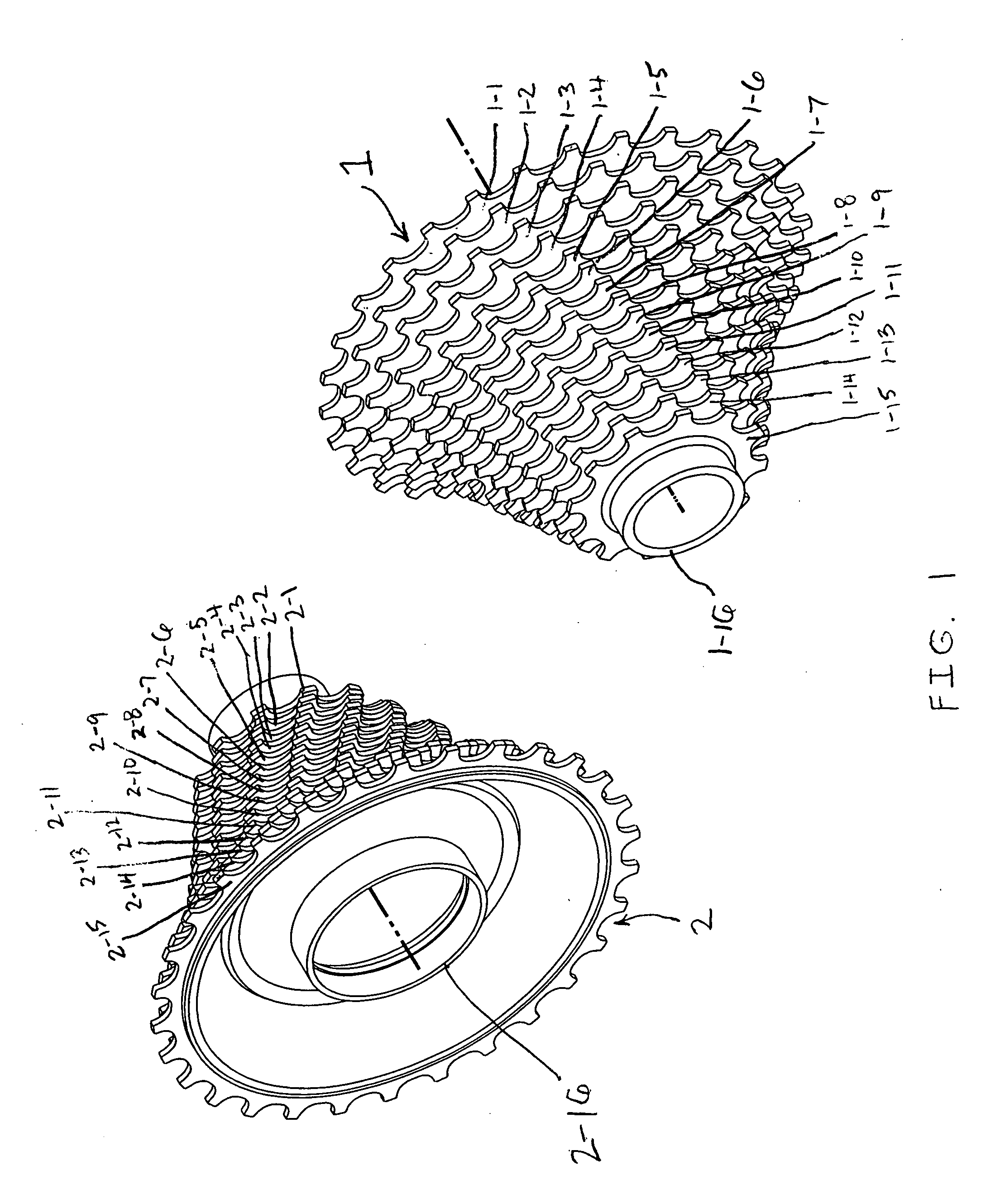Transmission systems and methods
a transmission system and transmission technology, applied in the direction of mechanical equipment, transportation and packaging, gear transmissions with conventional variable ratios, etc., can solve the problems of compromising transmission load transfer design and coupling methods, affecting the operation of transmission load transfer, and increasing the difficulty of contact surface areas in changing the drive ratio. , to achieve the effect of increasing the flexibility of location
- Summary
- Abstract
- Description
- Claims
- Application Information
AI Technical Summary
Benefits of technology
Problems solved by technology
Method used
Image
Examples
Embodiment Construction
[0234] Referring now to the drawings for the purpose of illustrating a preferred embodiment of the present invention only, and not for purposes of limiting the same:
[0235]FIG. 1 is an embodiment of a transmission carrier 1 having a plurality of fixed and coaxial ratioed drive elements of decreasing diameters located essentially parallel to a transmission carrier 2 having a plurality of fixed coaxial driven elements of decreasing diameters facing the opposite direction of transmission carrier 1. Transmission drive carrier 1 has fixed drive elements 1-1, 1-2, 1-3, 1-4, 1-5, 1-6, 1-7, 1-8, 1-9, 1-10, 1-11, 1-12, 1-13, 1-14, and 1-15 and each evenly spaced drive element is a smaller diameter in order from fixed drive element 1-1 through 1-15. Transmission drive carrier 1 has an inner diameter hub 1-16 and is fixable to an axle for rotation of the carrier around the carrier's central axis. Transmission carrier 2 has fixed driven elements 2-1, 2-2, 2-3, 2-4, 2-5, 2-6, 2-7, 2-8, 2-9, 2-10...
PUM
 Login to View More
Login to View More Abstract
Description
Claims
Application Information
 Login to View More
Login to View More - R&D
- Intellectual Property
- Life Sciences
- Materials
- Tech Scout
- Unparalleled Data Quality
- Higher Quality Content
- 60% Fewer Hallucinations
Browse by: Latest US Patents, China's latest patents, Technical Efficacy Thesaurus, Application Domain, Technology Topic, Popular Technical Reports.
© 2025 PatSnap. All rights reserved.Legal|Privacy policy|Modern Slavery Act Transparency Statement|Sitemap|About US| Contact US: help@patsnap.com



